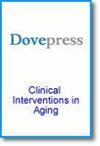对接受直接口服抗凝药治疗的髋部骨折患者进行术前药物监测
IF 3.7
3区 医学
引用次数: 0
摘要
目的:本研究旨在评估监测直接口服抗凝剂(DOAC)水平是否能改善对因髋部骨折需要手术的抗凝患者的管理:在一家三级教学医院收治的 2231 名髋部骨折患者中,共有 147 人(7.7%)服用 DOACs(A 组),而 206 名年龄、性别和骨折类型匹配且未服用抗凝剂或 P2Y12 血小板抑制剂的患者被视为对照组(B 组)。服用 DOACs 的患者分为两个亚组:A1组根据现行指南,按照最后一次服药时间安排干预;A2组包括根据DOAC水平确定手术时间(TTS)的患者。如果DOAC水平为30纳克/毫升,则考虑神经麻醉;如果DOAC水平在30-50纳克/毫升之间,则考虑全身麻醉:对照组的 TTS 明显低于 DOAC 患者:B 组 80.6% 的患者在 48 小时内进行了手术,而 A 组为 51%(p< 0.0001)。在 A2 组中,有 41 名患者(56%)在 48 小时内接受了手术,而 A1 组只有 32 名患者(45.1%;P=0.03)。在检测 DOAC 水平的患者中,TTS 和住院时间平均缩短了 1 天。最后,35/39(89%)例 DOAC 含量为 50 毫微克/毫升的患者在 48 小时内完成了手术(26 例在神经麻醉下进行,无任何神经并发症,13 例在全身麻醉下进行):结论:对髋部骨折患者进行 DOAC 检测有助于正确确定手术时间,尤其是对需要进行神经麻醉的患者。三分之二的患者在距最后一次服药48小时时DOAC水平为50纳克/毫升,他们顺利地接受了神经麻醉,与指南相比至少节省了24小时。本文章由计算机程序翻译,如有差异,请以英文原文为准。
Preoperative Drug Monitoring in Management of Patients with Hip Fracture on Treatment with Direct Oral Anticoagulants
Purpose: Aim of the present study was to evaluate whether monitoring direct oral anticoagulant (DOAC) levels may improve management of anticoagulated patients who need surgery for hip fracture.
Patients and Methods: A total of 147 out of 2231 (7.7%) patients with hip fracture admitted to a tertiary teaching hospital were on DOACs (group A), whereas 206 patients matched for age, sex, and type of fracture not on anticoagulant or P2Y12 platelet inhibitors were considered as control group (group B). Patients on DOACs were divided into two subgroups: A1 in which intervention was scheduled in relation to the last drug intake according to current guidelines, and A2 included patients in whom time of surgery (TTS) was defined according to DOAC levels. Neuraxial anesthesia was considered with DOAC levels < 30 ng/mL, general anesthesia for levels in the range 30– 50 ng/mL.
Results and conclusions: TTS was significantly lower in controls than in DOAC patients: surgery within 48 hours was performed in 80.6% of group B versus 51% in group A (p< 0.0001). In A2, 41 patients underwent surgery within 48 hours (56%) in comparison to 32 A1 patients (45.1%; p=0.03). TTS and length of hospitalization were on average 1 day lower in patients with assay of DOAC levels. Finally, 35/39 (89%) patients with DOAC levels < 50 ng/mL had surgery within 48 hours (26 under neuraxial anesthesia, without any neurological complication, and 13 in general anesthesia).
Conclusion: DOAC assay in patients with hip fracture may be useful for correct definition of time to surgery, particularly in patients who are candidates for neuraxial anesthesia. Two-thirds of patients with DOAC levels < 50 ng/mL at 48 hours from last drug intake underwent uneventful neuraxial anesthesia, saving at least 24 hours in comparison to guidelines.
Keywords: fragility fractures, oral anticoagulants, DOAC assay, safety
Patients and Methods: A total of 147 out of 2231 (7.7%) patients with hip fracture admitted to a tertiary teaching hospital were on DOACs (group A), whereas 206 patients matched for age, sex, and type of fracture not on anticoagulant or P2Y12 platelet inhibitors were considered as control group (group B). Patients on DOACs were divided into two subgroups: A1 in which intervention was scheduled in relation to the last drug intake according to current guidelines, and A2 included patients in whom time of surgery (TTS) was defined according to DOAC levels. Neuraxial anesthesia was considered with DOAC levels < 30 ng/mL, general anesthesia for levels in the range 30– 50 ng/mL.
Results and conclusions: TTS was significantly lower in controls than in DOAC patients: surgery within 48 hours was performed in 80.6% of group B versus 51% in group A (p< 0.0001). In A2, 41 patients underwent surgery within 48 hours (56%) in comparison to 32 A1 patients (45.1%; p=0.03). TTS and length of hospitalization were on average 1 day lower in patients with assay of DOAC levels. Finally, 35/39 (89%) patients with DOAC levels < 50 ng/mL had surgery within 48 hours (26 under neuraxial anesthesia, without any neurological complication, and 13 in general anesthesia).
Conclusion: DOAC assay in patients with hip fracture may be useful for correct definition of time to surgery, particularly in patients who are candidates for neuraxial anesthesia. Two-thirds of patients with DOAC levels < 50 ng/mL at 48 hours from last drug intake underwent uneventful neuraxial anesthesia, saving at least 24 hours in comparison to guidelines.
Keywords: fragility fractures, oral anticoagulants, DOAC assay, safety
求助全文
通过发布文献求助,成功后即可免费获取论文全文。
去求助
来源期刊

Clinical Interventions in Aging
GERIATRICS & GERONTOLOGY-
CiteScore
6.20
自引率
2.80%
发文量
193
期刊介绍:
Clinical Interventions in Aging, is an online, peer reviewed, open access journal focusing on concise rapid reporting of original research and reviews in aging. Special attention will be given to papers reporting on actual or potential clinical applications leading to improved prevention or treatment of disease or a greater understanding of pathological processes that result from maladaptive changes in the body associated with aging. This journal is directed at a wide array of scientists, engineers, pharmacists, pharmacologists and clinical specialists wishing to maintain an up to date knowledge of this exciting and emerging field.
 求助内容:
求助内容: 应助结果提醒方式:
应助结果提醒方式:


